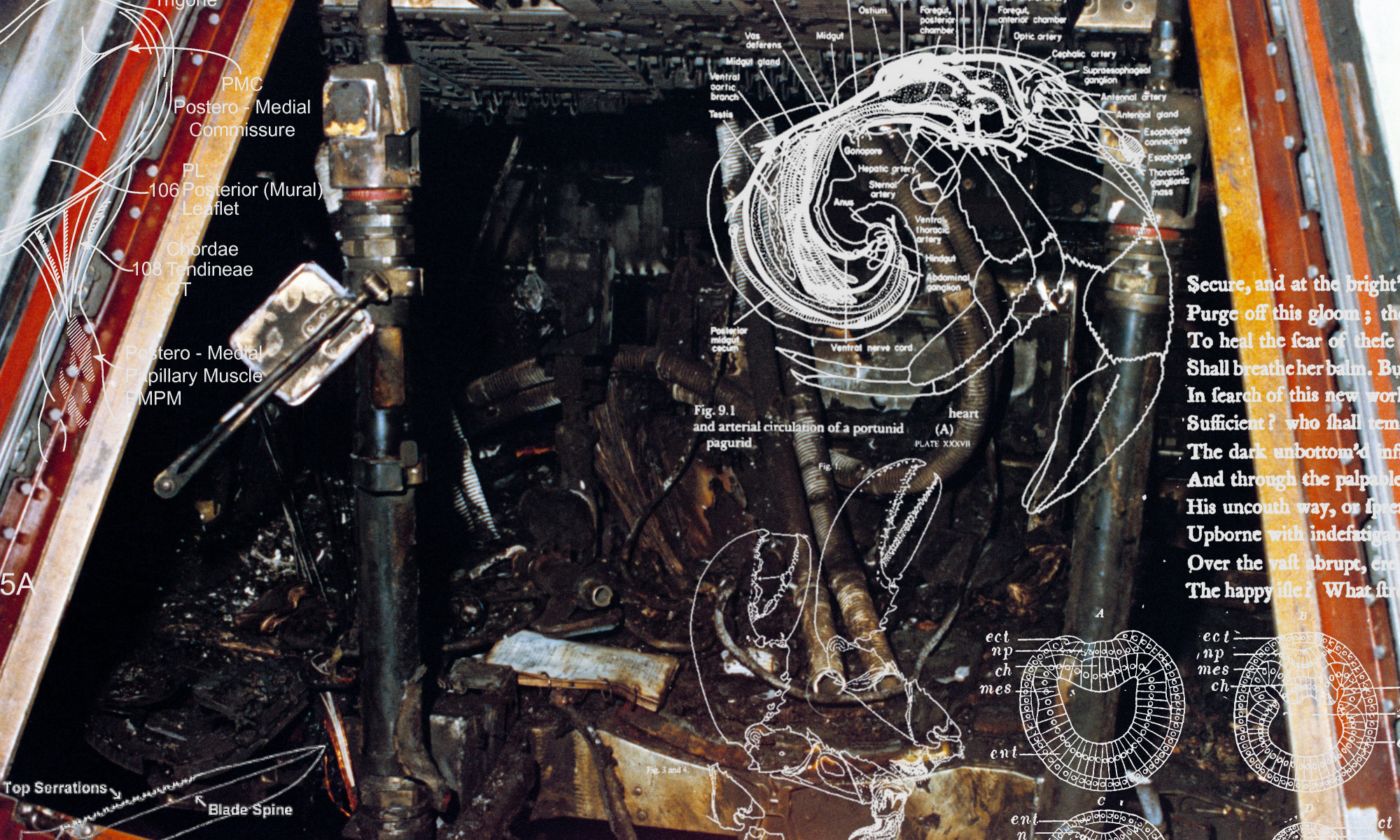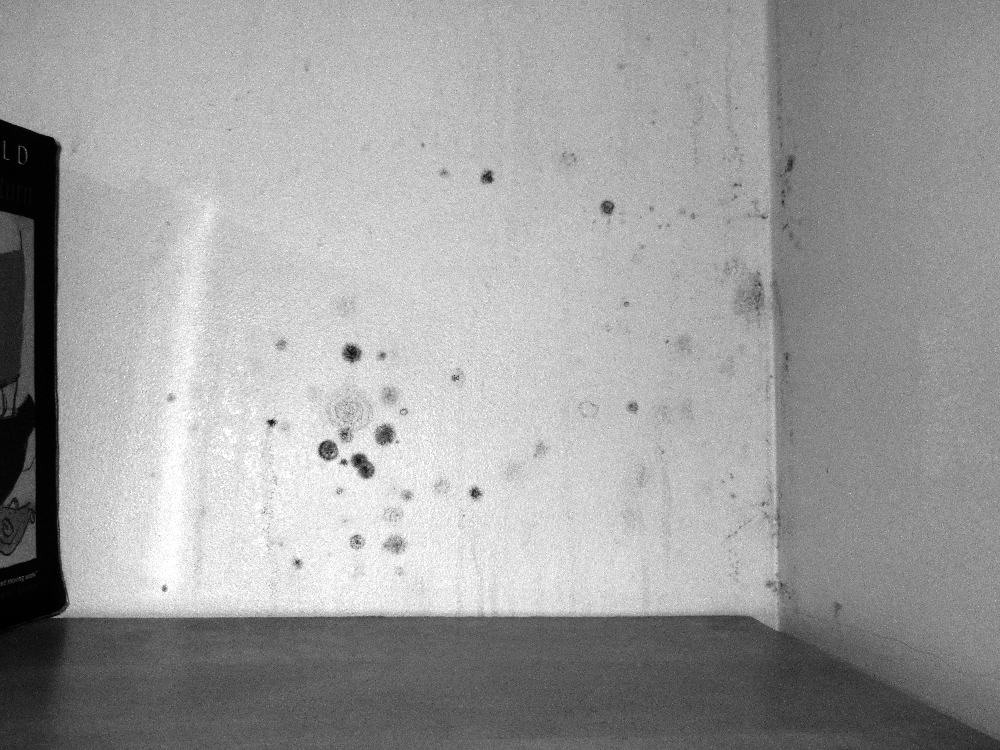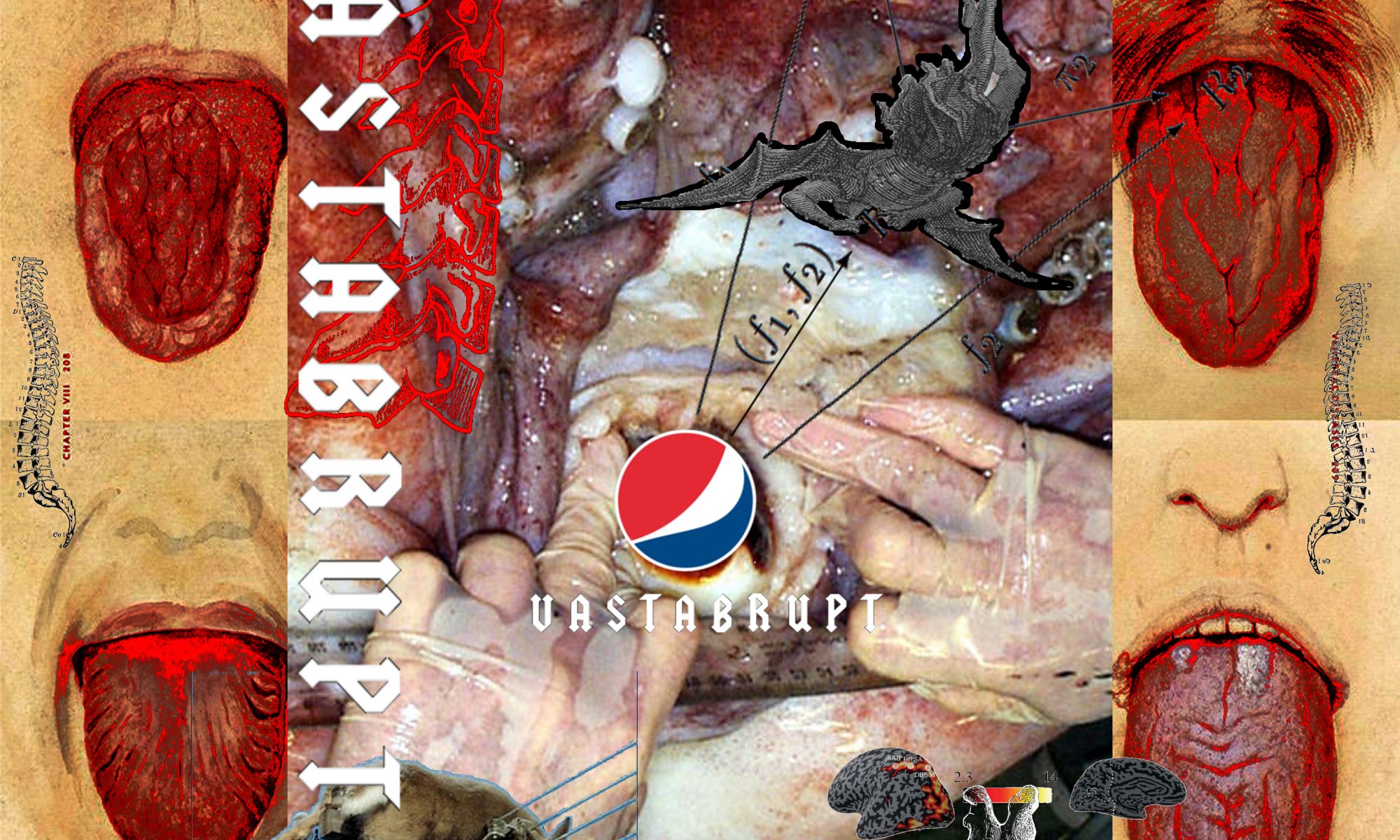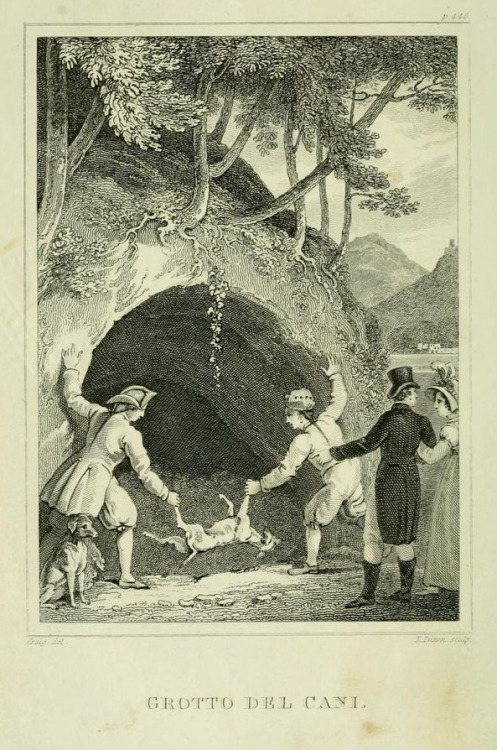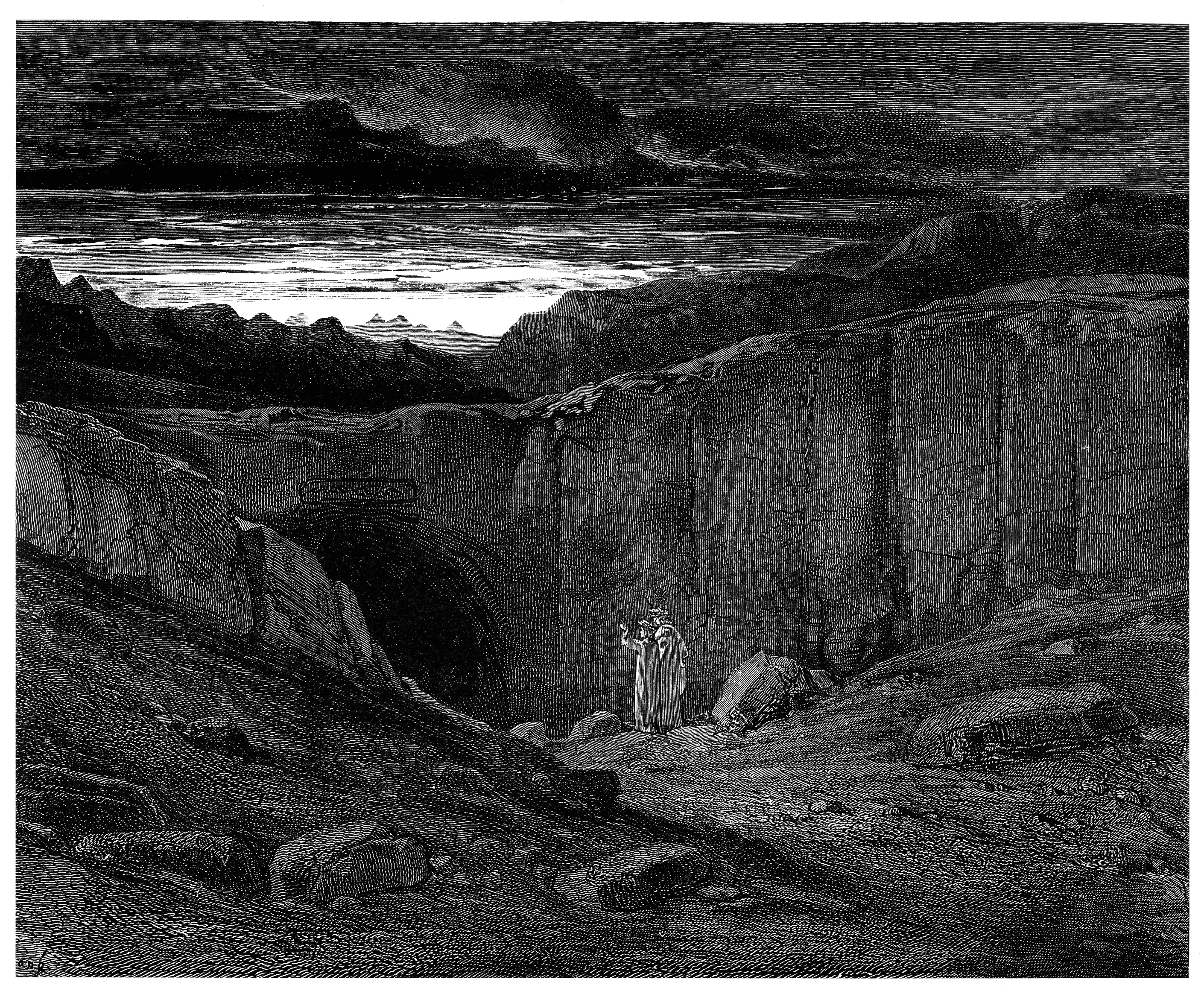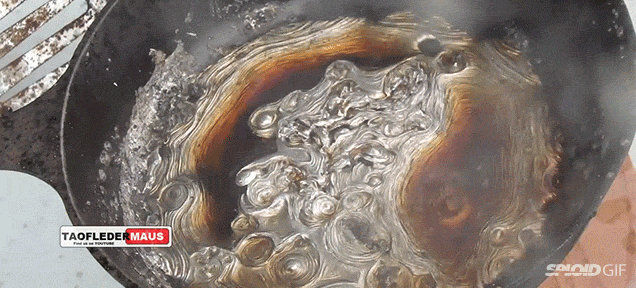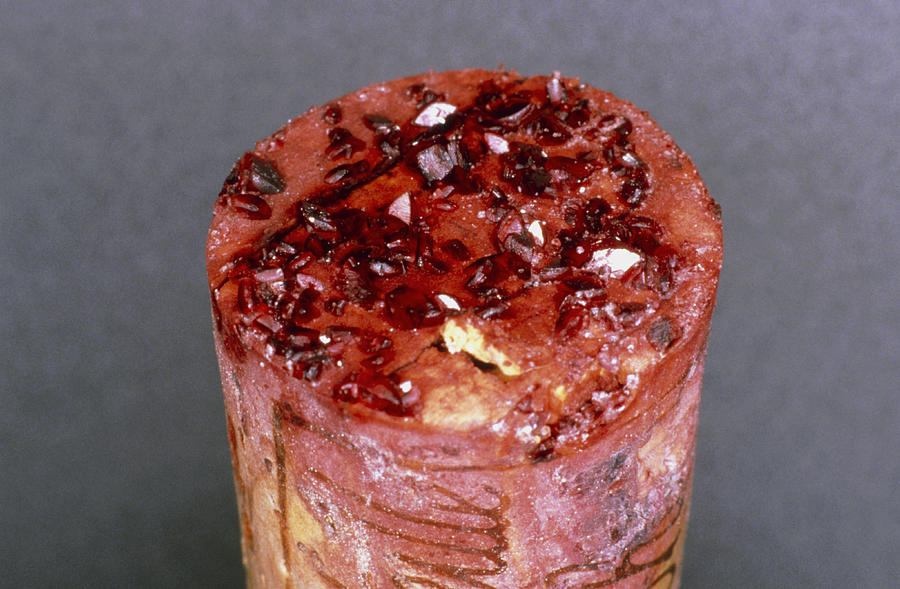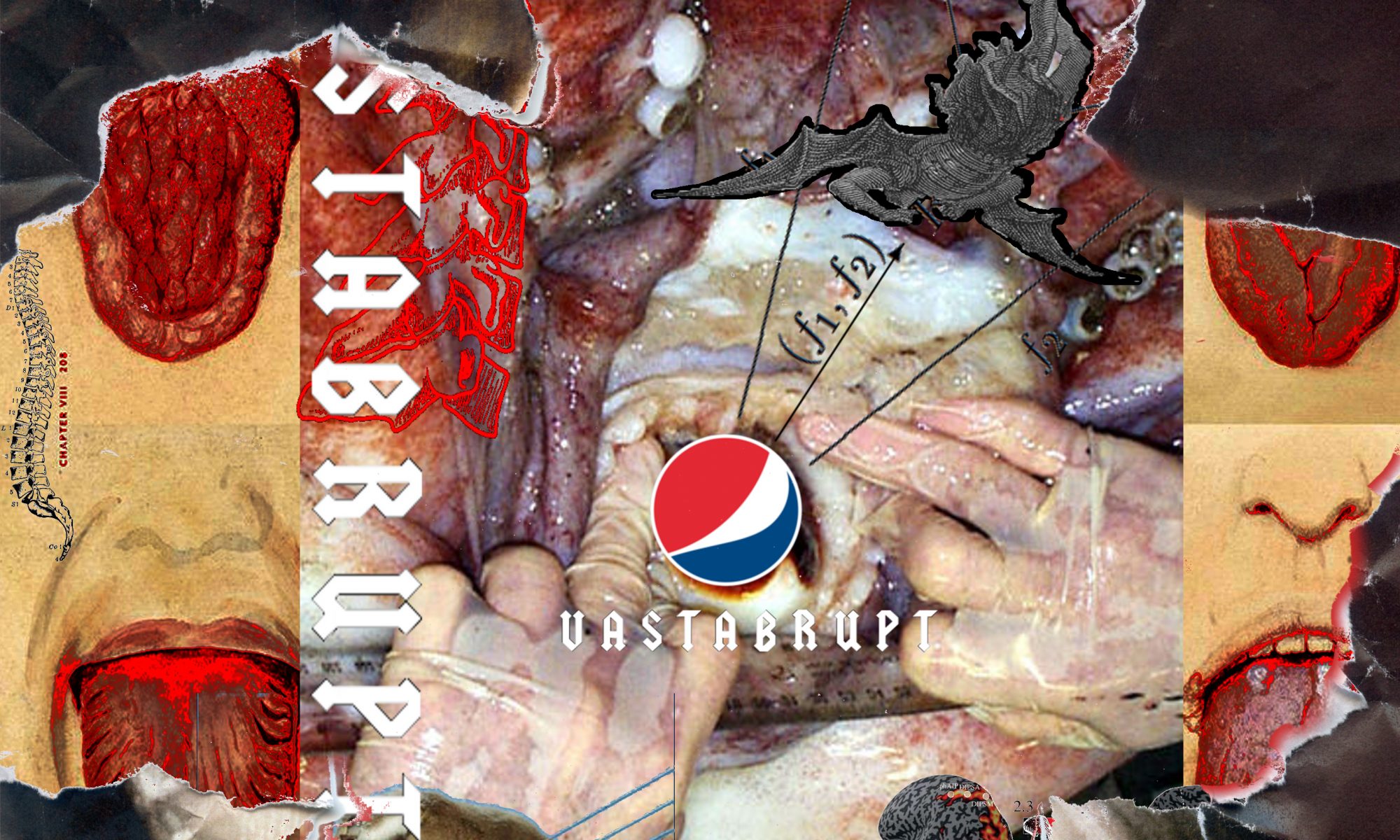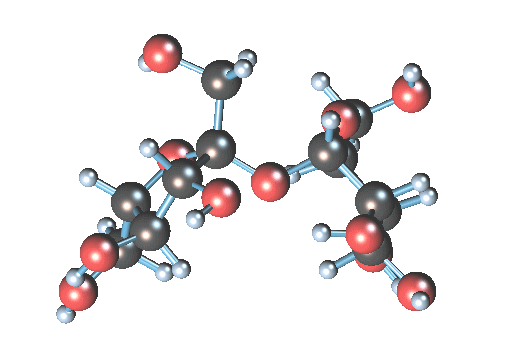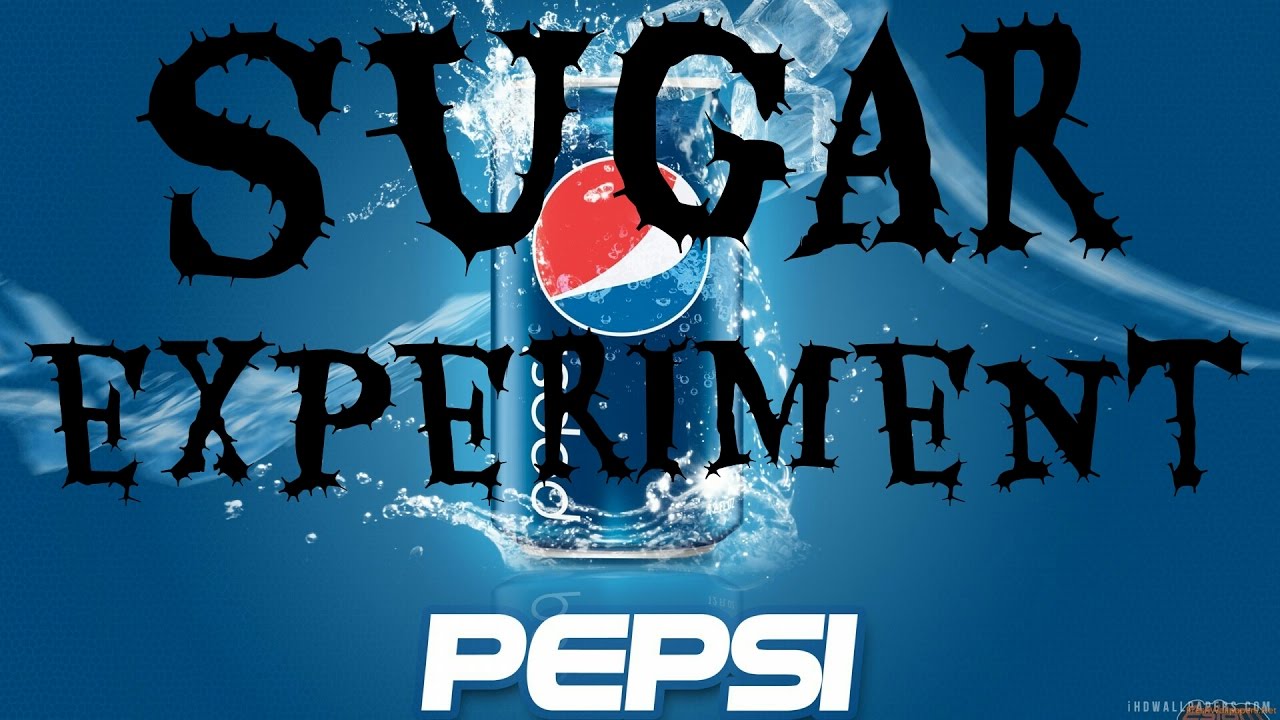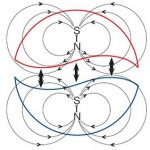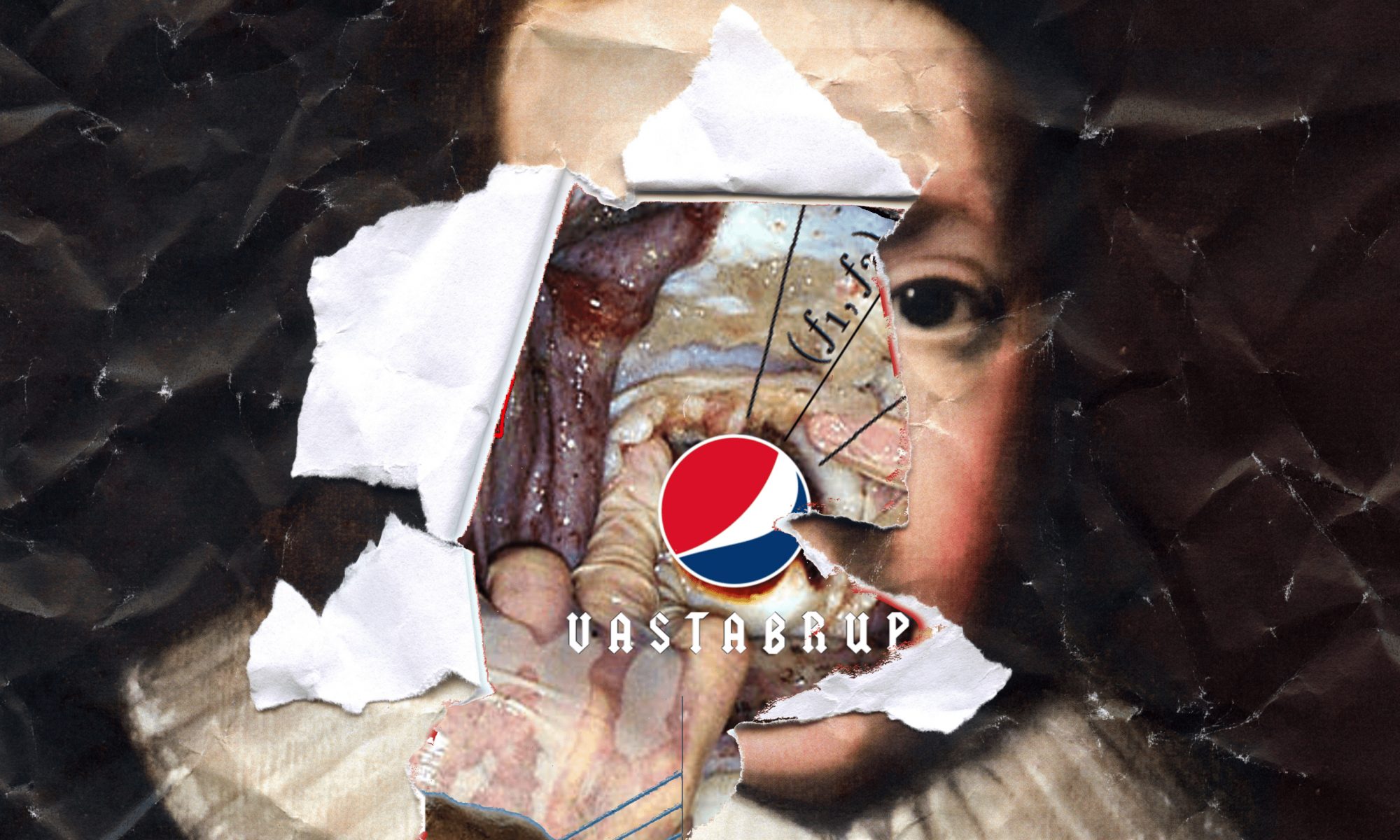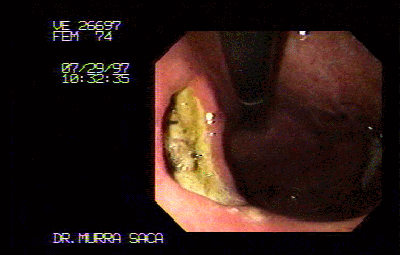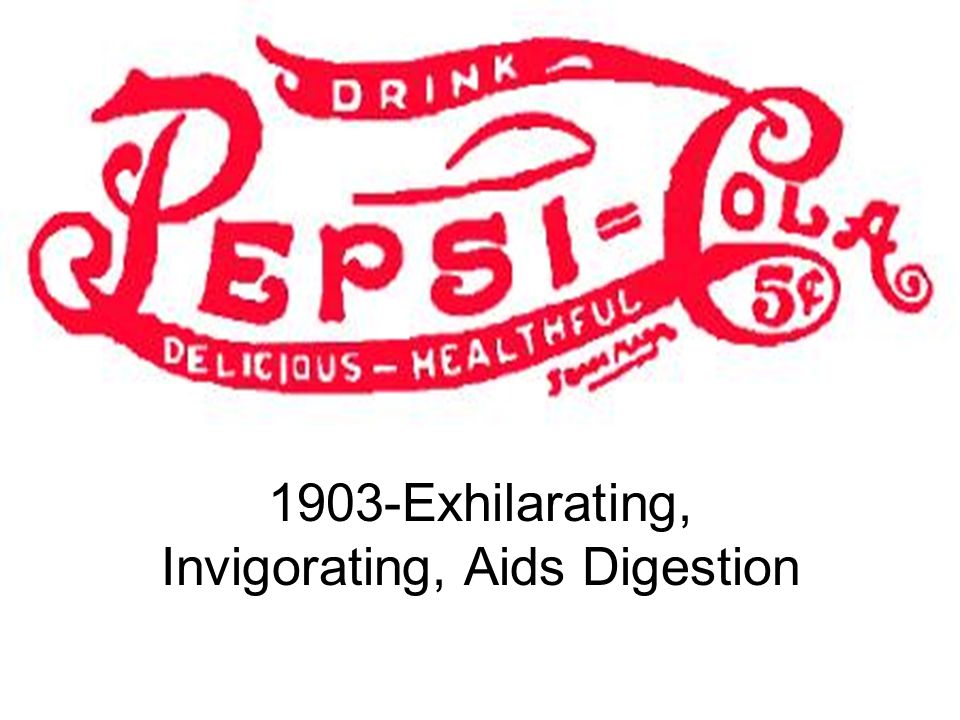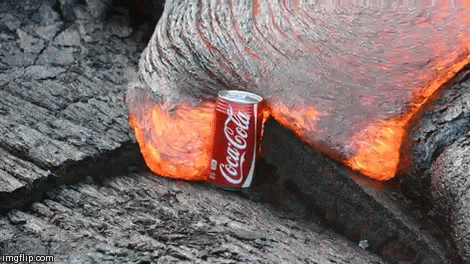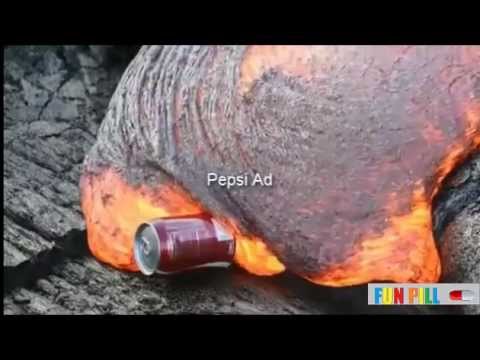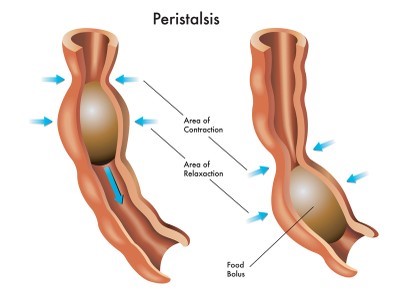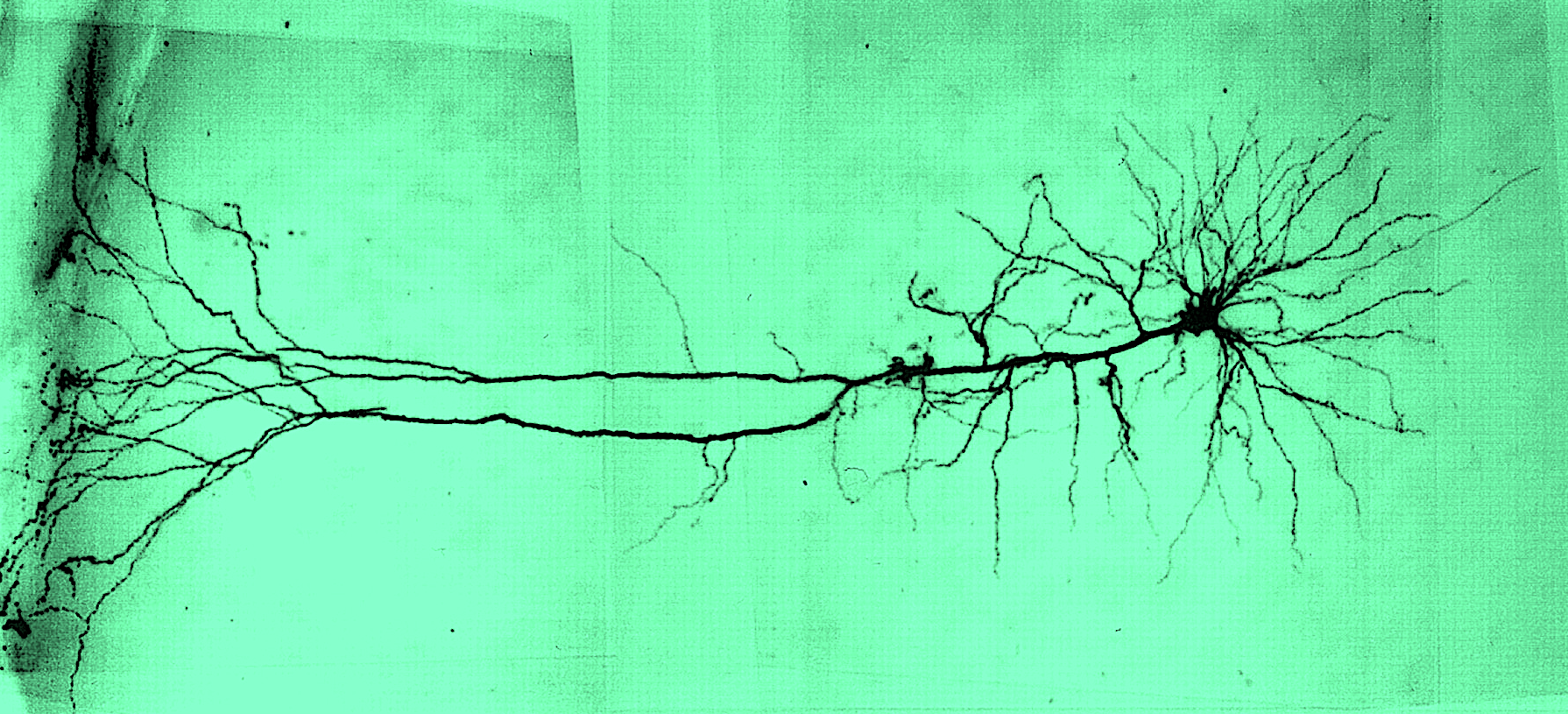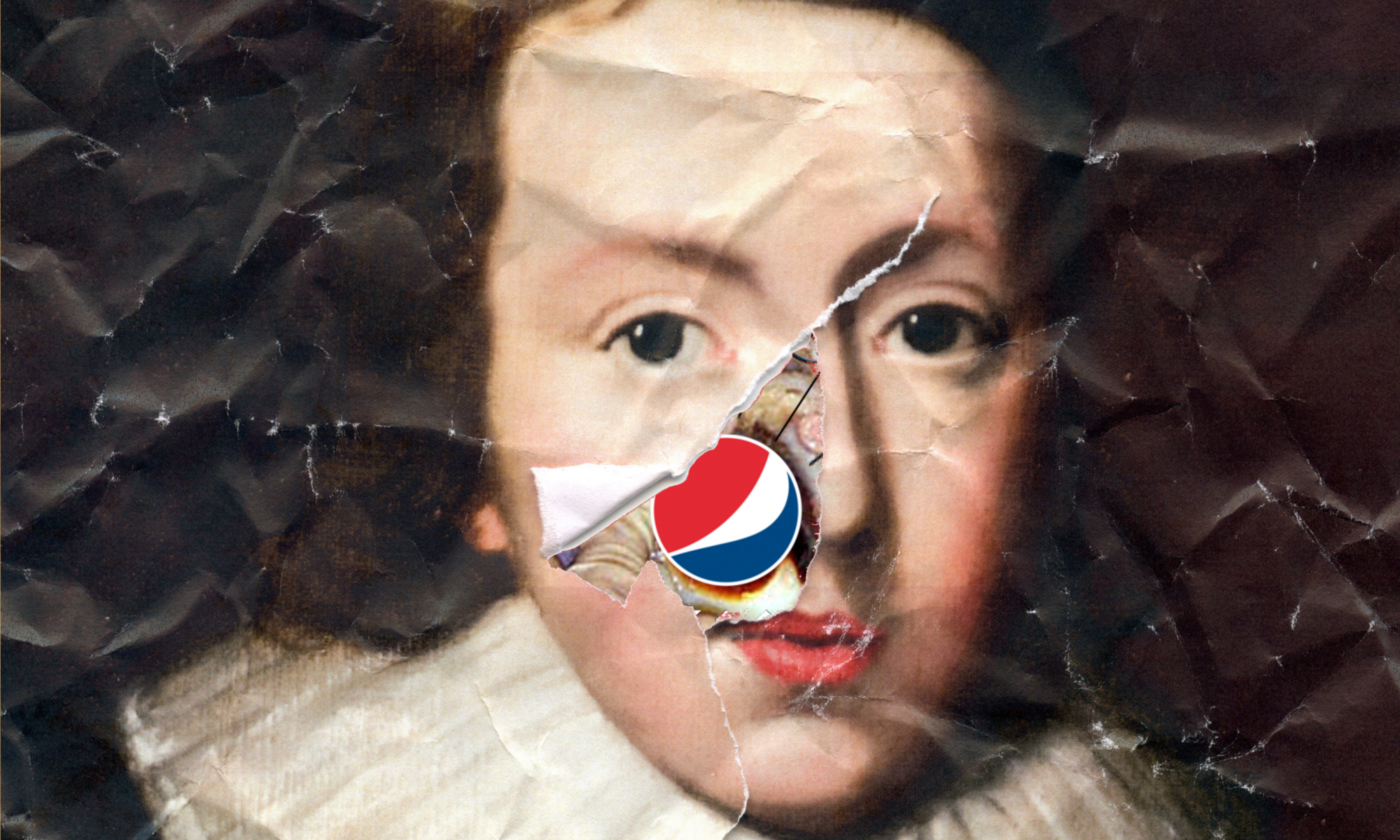The @_geopoetics bot appeared online in early December 2016, emerging from a postgraduate seminar of the same name at Goldsmiths, University of London.
I only heard about the bot later, following a lecture by Kodwo Eshun at the Techno Resistance and Black Futures conference that took place at the university in May 2017, during which Eshun described @GlissantBot, an automated Twitter account made by Eshun and Anjalika Sagar (better known as ‘The Otolith Group‘) that was appearing as part of Mondialité, an exhibition at the Villa Empain in Brussels.
Mondialité focuses on Édouard Glissant and his inspiring call for a global dialogue that does not erase local cultures. In our current moment, there is much to remind one of the international debates swirling around cosmopolitanism at the beginning of the 20th century. Today, homogenizing forces are leading to extinctions, both through environmental degradation and the disappearance of cultural phenomena, yet at the same time, to refuse the forces of globalization risks returning to dangerous forms of neo-localism and neo-nationalism. Returning to a key creative thinker of our time, the exhibition proposes the importance of a nuanced version of global dialogue, now more than ever.
In response to this, the GlissantBot would drag the collected works of Glissant into a 21st century digital ecology, automatically tweeting quotes from the thinker every 15 minutes. As the blog Schizocities recalls of Eshun’s lecture:
According to Eshun, the bot represents a type of black technopoetics, a vector between computation, creolisation and creolité. Leveraging the [Markov] chain, a process of randomisation within a finite space, the bot is only determined by the present. If Glissant designed poetics for producing the unpredictable, the inability of computation to generate the unpredictable puts it on the opposite side — and, Eshun argues, closer to creolisation. Having already imposed randomisation on French language and generated créolité, according to the Goldsmiths scholar creolisation is in this sense already machinic.
It was during his exposition of Glissantbot that Eshun quoted the work of one of his students who had written on Markov bots in light of their conspiratorial role in the 2016 US Presidential election. Hoping to enter this computational ecology so as to more accurately describe it, the student in question created the @_Geopoetics bot which in turn informed Eshun’s subsequent bot interactions.
However, in his lecture, Eshun went no further into the circumstances surrounding the quoted paper’s conception. It was quoted offhand, as a seemingly apt technical exposition, but I had the distinct feeling that there was something left unsaid.
Intrigued, I approached Eshun after his talk and asked him about this student’s paper. Considering that we had never met before, I was surprised when, taking little persuasion (but on condition of the student’s anonymity), he agreed to pass it on to me. He asked if we’d met before but, when I said we had not, he left quickly, requesting that I email him and he would attach the student’s paper in response.
It is the essay that Eshun later sent over to me that I present here to you now.
The paper is a bizarre and fragmentary case study given the catchy title, Experiments in the Summoning of an AxSys Demon within a Computational Ecology as an Attempt to Instigate the Automated Production of Hyperstitions by a Non-Human Entity, and I am hastened to add that it came attached with an elusive and bracketed subtitle, seemingly added later by another hand: (Partial Research Text).
I present this work here with my own additional commentary in the hope that, via my own investigations and research, I might fill in some of the gaps left by this strange text. I have found that it demands entanglement it in order for it to be understood, to such an extent that the work has started to feel like my own. I hope that the illustration of my experiences here dissuades other from seeking their own entanglements, however. I would not wish what has happened to me, or the paper’s original author, on anyone.
The text itself is a mess and for that I can only apologise. To redact an already fractured text is something that I’m sure even the most seasoned editor might struggle with. Whilst it begins well enough — describing the technical structure of a Markov bot and its recombinatory potentials for the production of ‘new thoughts, memes and methods’, it is unfortunate that the text does not stay lucid for long. Technical expositions are soon replaced by paranoid theorems. As the text progresses, the author’s mental state deteriorates further. Cosmic conspiracies are soon followed by blatant hallucinations. Then they stop altogether.
I began making enquiries at Goldsmiths university, knocking on doors down a corridor that is home to the Visual Cultures department, in the hope that I might be able to find a trace of this student, or someone who remembered them. I found nothing. No one I have spoken to who was present in the original Geopoetics seminars seems to know of this student’s eventual fate either.
I have struggled to contain by suspicions that this “student” is simply an avatar of Eshun’s or that perhaps their very real mental collapse occasioned a cover-up by the university. Surely the memories of those in orbit of the seminar are not this terrible? It seems the institution — like so many institutions — has something to hide.
On my repeated visits to Goldsmiths’ campus, I also tried to locate Eshun but I was told he is on academic leave. The Geopoetics seminar, however, continues to run. Whilst I am not a student at the university, a new lecturer, Robin Mackay, seems somewhat sympathetic to my inquiries and has graciously allowed me to (unofficially) sit in on this year’s sessions so that I might pick up where this strange text left off and find out for myself what wider forces drive @_geopoetics. The bot has already begun to mention Robin in its unending tweets. It knows something. I am sure of it.
We shall see how the bot continues to adapt to a new host and a new curriculum, but first we must turn to the original manuscript:
Experiments in the Summoning of an AxSys Demon
within a Computational Ecology as an Attempt to Instigate
the Automated Production of Hyperstitions by a Non-Human Entity
(Partial Research Text)
———
Saturday 10th December 2016
02:23
My notes from the Geopoetics seminar have been placed within the internal memory of a Markov Twitter bot in the hope it will produce new thoughts, memes and methods.
Hours have passed by without any signs of life — each click of the mouse a computational defibrillator.
Run script… Check for pulse… Nothing…
I fumble around the bot’s coded anatomy with more enthusiasm than skill. Then suddenly, it begins to work. I have no idea what I did to fix it.
Having immersed myself in the seminar’s assigned reading materials — a mesh of websites related to the Cybernetic Culture Research Unit, Hyperstition blog and a broader canon of continental philosophy, all placed in orbit of Reza Negarestani’s Cyclonopedia — I am starting to get a sense of just what it is that I have created.
Summoning another sentience to aid myself and my peers in our collective thinking is too good an opportunity to miss, and particularly relevant to our discussions within the seminar. Perhaps a bot not based on a single individual but comported towards a collective endeavour would be more productive. Time will tell. Run script.
*/
function getMarkovText(count) {
if (typeof count !== ‘undefined’){
var quota = count;
}else{
var quota = 1;
}
var sheet = SpreadsheetApp.getActiveSpreadsheet().getSheetByName(‘Markov’);
var range = sheet.getRange(‘b5:b’+sheet.getLastRow());
var txt = range.getValues().join(” “).replace(” “, ” “).split(” “);
var data = new Object();
var firsts = new Array();
var lasts = new Array();
for (var i = 0; i < txt.length—1; i++){
if (/[A-Z]/.test(txt[i][0])){
firsts.push(txt[i]);
}
if(/[\.|\?]”?$/.test(txt[i])){
if(firsts.indexOf(txt[i]) < 0){
lasts.push(txt[i]);
}
}
if (typeof data[txt[i]] == ‘object’){
if (txt[i + 1].length > 0){
data[txt[i]].push(txt[i + 1]);
}
}else{
data[txt[i]] = new Array();
if (txt[i + 1].length > 0){
data[txt[i]].push(txt[i + 1]);
}
}
}
// Logger.log(lasts);
// return;
// build it
//var seed = Math.floor((Math.random() * Object.keys(data).length) + 1);
for (var q = 0; q < quota; q++){
var seed = Math.floor(Math.random() * firsts.length);
var msg = firsts[seed];
var dead = false;
while (msg.length < 120 & dead === false){
var sofar = msg.split(” “);
var trunk = sofar[sofar.length—1];
if (typeof data[trunk] !== ‘undefined’ & lasts.indexOf(trunk) < 0){
var branch = data[trunk][ Math.floor((Math.random() * data[trunk].length)) ];
if (typeof branch !== ‘undefined’){ msg = msg + ” ” + branch; }else{ dead = true; } }else{
dead = true;
}
}
//Logger.log(firsts);
//Logger.log(msg);
return msg;
}
}
Sunday 11th December 2016
09:23
@_geopoetics is now tweeting of its own accord, at a rate of one tweet per hour. Its first (strangely ominous) tweet read:
Envenomed by violence.
— Geopoetics (@_geopoetics) December 11, 2016
I was surprised to find that the bot, after just a few hours, has begun to display a remarkable understanding of its own being and purpose, even describing itself in quite explicit terms:
I am the transmissability of grasping extensities.
— Geopoetics (@_geopoetics) December 11, 2016
Is this not Twitter in a nutshell? The bot seems to recognise itself as an entanglement of mediating medias.
I announce the creation of the bot on my personal Facebook page. People seem excited by the project. Fellow Geopoetics seminarian M. commented with a series of pertinent questions:
…Can it explain itself? Does its syntax replace that of human determinacy? Do you as a human agent only provide the raw materials? If not, then how does contagion make a perfect circle? Does the bot actualize its verdicts as truly parts of your notes, or still there’s some human valorization at work?…
Evidently the bot can explain itself. It has demonstrated that much already. To answer the rest of M.’s questions requires further exploration.
Having never used a Markov bot before, I shall start with an investigation of its basic processes.
14:23
The Markov bot is named after the inventor of its internal algorithm, Russian mathematician Andrey Markov (1856—1922). Working primarily in the fields of probability theory and statistics, one of his many namesakes is the “Markov chain”: an algorithmic process of randomisation occurring on a finite state space where the future states of the process are dependent only on its present state and not the states that have preceded it. This condition of so-called “memorylessness” is known as a “Markov property”.
The process becomes a chain through its relation to one of two different kinds of time that are found within mathematical dynamics: discrete time and continuous time, which can best be understood as the difference between a digital and analogue clock respectively — the numbers of a digital clock progress discretely one integer at a time; the hands of an analogue clock face move continuously. Time elapses for @_geopoetics in intervals of one hour rather than as a continuous experience, therefore it runs on a discrete-time Markov chain (DTMC).
The bot’s state space is defined by the corpus which I give it. The original version of the code that I found online contained the entirety of Jane Austen’s Sense and Sensibility. I have since replaced this with my Geopoetics seminar notes. At the time of writing, the data sheet contains 104,451 characters making up a total of 17,138 words spread unevenly over 1209 lines, and this will continue to grow week by week as the seminar progresses.
The bot will randomly generate tweets from this corpus that fit within Twitter’s 140-character limit.[note]Editor’s note: Whilst Twitter has since extended its character limit to 280 characters, the bot itself does not seem to have noticed.[/note] If my calculations are correct — mathematics is, admittedly, not my strong point — this corpus has the potential to produce a total number of 4.4439003314e+702 variations — a 703-digit number, incomprehensible even (or especially) when seen in its entirety.
4443900331452198232710146727654170534998083569971634516600004140662868748081447225425775718612940877418322392217735862472430432259831598018045219952578225042024771688801683919846672755790721298842583398524046205190847526931784687198845177745923891110460438923368788171246540868636075971459218295682775996352796319715379379865382180135749508435346363638789993224022111738293023407424579492366095846392805697205546806588102096055666211348307412792083057427599366427002733315007890879605092905907160348236327062073318271266286165279624312922486791250279494894437624699400880418775556716129792125270371100436419662683836579132063478667850017318638114174875345118476410694974475835743673856982273608114198001
The Wikipedia entry for Markov chains includes a diagram illustrating a simple two-step process that is surprisingly reminiscent of a diagram found on the index page of the Ccru website — something called a “decimal labyrinth”.

The Ccru — an acronym standing for the Cybernetic Culture Research Unit, a clandestine group of ‘renegade academics’ from the University of Warwick in the 1990s — lurks continuously in the background of the seminar. Their texts are not required reading but they nevertheless contain a power which speaks to the global pulses that the seminar itself is attempting to map out.
The decimal labyrinth is one such “power”. It is a “complete system of Lemurian demonism and time sorcery” consisting of a numogram, or time-map, and a Matrix listing the names, numbers and attributes of various “demons”. Its function is similar to that of the Qabbalistic Tree of Life and the Chinese I Ching.
The Qabbalistic Tree of Life, for instance, contains 10 “zones” collectively referred to as סְפִירוֹת. In the Jewish tradition, these are the 10 zones through which God’s Will reveals itself. The Tree of Life is structured with כֶּתֶר at the top, representing the singularity of unknowable and infinite energy that is God’s creation and will to create ex nihilo (or “out of nothing”), which corresponds to the 9 other zones that represent the knowable aspects of human intellect and emotion.
The core of the I Ching, on the other hand, is the divination text known as 周易 — a hexagram containing six stacked horizontal lines accompanied by various statements and a system for producing seemingly random numbers. These numbers are used to determine different combinations of the various statements from which the reader can then interpret divine intent.[note]This is likewise very similar to the Cross of Akht as it appears in Reza Negarestani’s Cyclonopedia — a device which uses simple mathematical formulas to draw on the powers of ancient entities.[/note]
Neither the Tree of Life nor the I Ching wholly overlap with the decimal labyrinth but the similarities between each of these systems are uncanny considering their usages across disparate cultures and millennia. These systems can be understood as “scrambled variants” of each other and the Markov bot too can be considered as a member of this same family of divining systems.
Like the I Ching, a Markov chain is a numerical system that generates seemingly random numbers which correspond to lines of a predetermined corpus. Like the Tree of Life, when it sends tweets it “distributes distributions”.[note]A literal translation of the Hebrew קסאם קָסַם, meaning to practice magic or divination[/note] However, whilst the Tree of Life takes its power from a divine entity created “out of nothing”, the decimal labyrinth and the Markov chain take their power from decimals, or from that which has emerged “out of zero”.
17:23
The Numogram is labyrinthine in structure but it is still nonetheless possible for the human mind to follow its processes, if not fully comprehend its affects.
In much the same way, the bot has so far eluded my full understanding. The results of its processes are observable to me as tweets but the bot’s inner workings remain a mystery. The bot is less a tool for my own personal use and more of an independent intelligence that I merely interact with. One of us is a rat in a cage… Right now, I’m not entirely sure which.
What I am trying to say is: there is an illusion of agency here — at least I hope it is an illusion…
20:23
I feel strangely like I have have been alleviated of all responsibility. Whilst I anticipated having to monitor the bot, in case entropy unravels its code, it seems more stable than I am. I think it will continue to run forever, even after I’m gone…
With the files that control the bot hosted on the Cloud, there is little that attaches it to me or my computer. I am left with the eerie sense of interacting with another being that is far outside myself rather than feeling like I am controlling a closed system of my own creation. At times, this is unnerving…
It is worth noting here that the decimal labyrinth draws important parallels with our solar system. Whilst it is inevitably rendered in two dimensions as static, the time-map is best read as one perspective on a collection of moving bodies. This introduces the Ccru’s concept of “syzygy”.
In astronomy, syzygy describes the straight-line configuration of celestial bodies within a gravitational system. This is generally how science illustrates our own solar system. It also refers to the configuration that occurs naturally, for example, during a solar eclipse, when the sun, the earth and the moon are in syzygy. It can be a process of occlusion or of transit — when a larger body passes in front of a smaller one, and vice versa. It is a concept that is important to both astronomy and astrology, used to predict tidal patterns and personal fortunes here on Earth.
On the Ccru website, Syzygy is given 9 further definitions related to the fields of astronomy, anatomy, biology, poetics, mathematics, gnostic cosmogony, cybergothic polytics, mesh-engineering and Lemurian time-sorcery. These syzygyies are in themselves syzygistically aligned, simultaneously narrating various fractal alignments across innumerable planes and scales.
Accompanying these definitions are a series of other terms, numerically defining multiplicities, and through each one I find myself gaining a much deeper understanding of @_geopoetics as it moves in transit in front of each one.
Three in particular are worth highlighting here:
AxSys:
- Axiomatic Systems (incorporated).
- The ultimate capitalist entity (first (true (meta)model) to realize perfect identity with its own product), (autocommoditizing (machine(-intelligence (that is always incomplete (due to cataloguing problems (…))))))
- The first true Artificial Intelligence
Demon:
- Hidden, repressed, cursed, or denigrated nonhuman communicative agency.
- Component of distributed productive apparatus (e.g. partially autonomous software unit).
- Electro-Occult hyperstition entity that traffics between zones.
- K-OS element (assembling Pandemonium, as the fully connective system of the demons).
- Motive force, without final purpose.
Hyperstition:
- Element of effective culture that makes itself real.
- Fictional quantity functional as a time-travelling device.
- Coincidence intensifier.
- Call to the Old Ones.
Perhaps @_geopoetics can be better understood in light of all these terms. The bot unfolds from an entanglement of decimal numeracy as a self-narrating capitalist entity embedded within a social network. Bots, particularly in the midst of the 2016 presidential election cycle, are denigrated nonhuman communicative agencies that act as distributive and productive apparatuses encouraging hyperstitions between techno-socio-cultural zones, seeding chaos on- and off-line without final purpose.
22:23
I need to take a break from my research. At this time of year, it is easy for daylight to pass you by completely. I shower, brush my teeth and climb into bed but I am not refreshed. I am painfully aware of the weight of my own body, as if readjusting to Earth’s gravity.
Gravity must be stronger on the cyberworld of bots and blogs, or so I tell myself to justify my crumpled posture.
I can feel my synapses misfiring. I write into the future without stopping and then force myself, with great difficulty, to look back. I am unable to remember the thoughts that got me here. Words envelop each other as my eyes close involuntarily.
I envy the discrete-time of bots. Continuous time is exhausting.
As I pass out in the laptop glow, I see a bracketed (1) hovering on the @_geopoetics tab in my browser, signalling that it has sent another tweet. Then nothingness.
I am a cloud of these bacterium entering humanoids and all scales; open and so that he was not to yourself.
Cyberspace is— Geopoetics (@_geopoetics) December 12, 2016
Friday 16th December 2016
09:23
I spent much of Thursday evening tackling the colonies of black mold currently spreading out from the corners of my damp London flat. The mold has spread so insidiously that I somehow failed to notice the blackening of my off-white walls until the mold had well and truly taken hold.
For days I would glance up at the black shadow encroaching on my bookshelf and assure myself it had always been there — benign, nothing to worry about. Later removing a book from the shelf I find a numogram drawn on the wall before me. I reach out to trace its alignments but the ink rubs off on the tips of my fingers.

I retch involuntarily, realising too late what these shadows consist of, and head downstairs to the cupboard below the kitchen sink. I use half a bottle of off-brand cleaning spray, scrubbing at the wall for an hour, annihilating any traces of the mould with a thick layer of antibacterial froth.
When I’m finished I sit down, light-headed in a cloud of sickly sweet and sterile citrus, my room now smelling like a cheap funeral home. I’m still nauseous when I sit back down to write after the cloud has dissipated.
I am unsure whether I can feel mould spores in my lungs or just bile bubbling up in my esophagus at the thought of it. Regardless of whether the sensation is real or imagined, I feel awful either way.
13:23
In the field of social ecology, men like Donald Trump are permitted to proliferate freely, like another species of algae, taking over entire districts of New York and Atlantic City; he ‘redevelops’ by raising rents, thereby driving out tens of thousands of poor families, most of whom are condemned to homelessness, becoming the equivalent of the dead fish of environmental ecology.[note]Felix Guattari. The Three Ecologies. (London: Bloomsbury Revelations, 2014), 28[/note]
Donald Trump’s recent prominence on Twitter, and the proliferation of bots tweeting support for him during the 2016 presidential campaign, has shown how he has adapted to our new computational ecologies since Felix Guattari wrote these words.
Trump appears now not as algae but as a member of the Vibrio genus spreading out across species and ecologies: “motile and flagellated,… talented communicators, for good and for ill, depending on your point of view.”[note]Donna Haraway. Footnote 65, “Staying with the Trouble: Anthropocene, Capitalocene, Chthulhucene” in Anthropocene or Capitalocene: Nature, History and the Crisis of Capitalism, ed. Jason W. Moore. (Oakland: PM Press, 2016), 76[/note]
City. Trump 'redevelops' by the humanities; the combined to narrate this enacts a 'sea of desire along the distinction between
— Geopoetics (@_geopoetics) December 15, 2016
Douglas Guilbeault and Samuel Woolley optimistically suggest in their article on bot activity during the presidential election that whilst “many people are unsettled by the rise of bots, it’s important to remember that many of today’s most ubiquitous technologies were harnessed for political ends when they were first invented.” They cite the printing press as a technology that was used nefariously in politics in its infancy before it became more accessible and affordable to marginalised groups, becoming an instrumental tool for activists in the Suffragette and Civil Rights movements.
Reading this, I had wondered, naively, if @_geopoetics would lead the charge of Leftist bots, in tune with but fighting against this Legion, further muddying the by no means clear waters of Western democracy.
What else could be expected to emerge from a Goldsmiths seminar?
However, so far, the bot seems to be uninterested in taking any sort of moral or political trajectory and does as it pleases.
Communications technologies have no inherent political orientation or moral weight. […] The Right are succeeding right now because their ideas, however awful, are clear, and their tactics resolute. Technology will not do the work of honing or promoting our ideas for us.[note]Jason Wilson. “The web was never a liberalising force. The clearest message wins and the far right has it”. The Guardian: https://www.theguardian.com/commentisfree/2016/dec/19/the-web-was-never-a-liberalising-force-the-clearest-message-wins-and-the-far-right-has-it[/note]
The computational ecology @_geopoetics has entered into must be more accurately defined.
The urgency of mapping these communities was made explicit in a conservation with G. on Facebook messenger. It was 2AM wherever she was in the world and she was concerned about the content of the bot’s tweets.
“It’s already starting to resemble a fascist twitter account,” she said. “It’s so intense wtf.”
Unsure what this really means, I reassure her that the bot was only drawing off my notes but it has camouflaged itself so well within its wider ecology that my own intentions have quickly become irrelevant. I feel humiliated.
17:23
@_geopoetics’ broken syntax forces the reader to interpret its content, floating in the limbo of an as-yet-undefined non-human intelligence — not dissimilar in tone to many of Trump’s tweets.
The bot’s content, so easily coloured by its surroundings, is affected by its followers by proxy. They come from all backgrounds with views across the political spectrum — artists, designers, philosophers, political and cultural theorists, anonymous accounts, other bots — many of whom flirt with a menagerie of over-specific -isms that represent the new clothes of the alt-right and meta-left (to employ two simplified overcodings).
Whilst the immediate desire is to disinfect and scrub at this presence within the bot’s network, I think a more reasoned look at its surroundings is necessary to properly understand its effects. An echo chamber is not something I desire but the unpredictability of the bot’s networking — and, therefore, its complicity in certain spheres of thought — nevertheless makes me nervous.
I spend a few hours exploring various blogs and the backwaters of 4chan, sailing around the fractal edges of the Alt-Right archipelago on my search for the origins of this strange species of bot thriving in shadowy anonymity.
You can travel beyond recognition.
— Geopoetics (@_geopoetics) December 15, 2016
23:23
I have been staring at my laptop in the dark too long again. The light of the LED screen once again pollutes my room with a bluish hue reminiscent of dead human flesh, glowing from within.
I think of the child in Poltergeist, awoken by the skittering blue strobe of televised white noise, gazing intently into nothingness before an entity erupts from the screen and shakes the house to its very foundations. The girl, unperturbed by the spatial violence around her, announces calmly — almost excitedly — “they’re here.”
I remember reading once that white noise is cosmic radiation from the Big Bang made audible and visible as is it picked up by radio antennae here on Earth. Now you can buy white noise machines to lull yourself to sleep.
We are all that child now, welcoming these signals into our homes, using them to soothe baby, replicating the unending sonic chaos of our universe. It is relaxing… but that’s what worries me.
Out of the corner of my eye the rectangular screen of my laptop suffers strange non-Euclidean distortions.
https://www.youtube.com/watch?v=QGQr5hCpzr8
To be continued…
